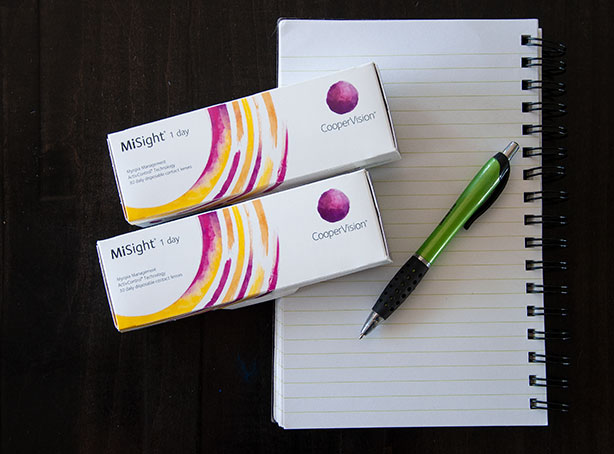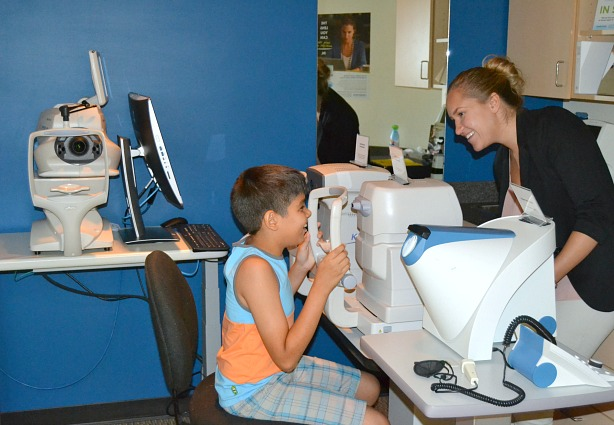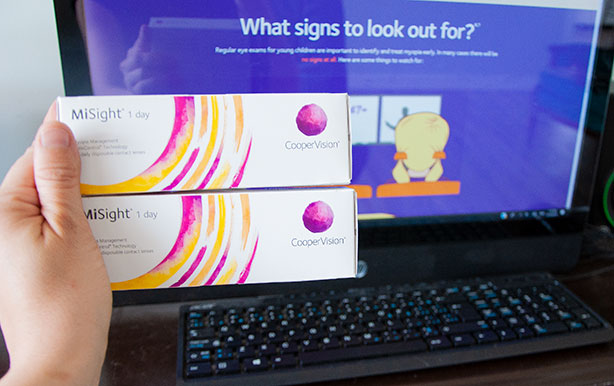As a mom of three, I sometimes get overwhelmed with all the information given to parents in our modern age. Keeping up with the latest health news and advice is tricky—especially when it’s changing all the time!
Eye health is something I’ve been passionate about ever since my oldest son was unexpectedly prescribed glasses to correct myopia (also known as nearsightedness) three years ago. He hadn’t shown any signs of eye problems, so I hadn’t thought to make an eye appointment for him. His diagnosis came as a complete shock!
Since that day, I’ve made sure I stay as up-to-date as I can both on my boys’ eye exams, and on current information about myopia. Whether or not your own child has myopia, these five facts are ones that every parent should know!
Myopia Is On the Rise
In the 1970s, about 25% of people were diagnosed with myopia.1 Today, that number had risen to about 42%—and it’s expected that by 2050, nearly half of all people in the world may be nearsighted!2
Doctors aren’t sure exactly why this increase is happening, though some suspect the changes in our activity levels and an increase in close-up work like screen time are thought to possibly play a part.
Getting Outside Prevents Myopia
One of the easiest way to prevent myopia from developing is spending time outdoors. And, surprisingly, this isn’t because being outside means spending less time doing close-up work!
Even when the amount of screen time, reading or other close-up work a child does remains the same, spending 14 hours a week outdoors (just two hours a day!) significantly reduces the chances of that child becoming nearsighted.3
Scientists have a few theories about why this might be. Some believe the different light quality helps encourage eye health. Others believe the increased Vitamin D absorption might play a role. But whatever the reason, ensuring your child spends at little as two hours outside each day is a great way to help their vision stay sharp. 3,4
However, once a child has developed myopia, that time spent outdoors doesn’t seem to slow its progression. So, an ounce of prevention really is worth a pound of cure in this case!
Myopia Has Ties to Heredity
Any child has about a one in four chance of being diagnosed with myopia. If you wear glasses for myopia, there’s a one in three chance that your children will develop the condition. And if both parents of a child have myopia, there’s a one in two chance the child will be nearsighted!
But even if you and your significant other both have myopia, there’s no need to start shopping for glasses just yet. That time spent outdoors that helps prevent myopia from developing actually helps reduce the hereditary risk as well! 4,5
Myopia Usually Worsens Over Time
Once a child has developed myopia, which usually happens when the eyes are developing quickly between 6-12 years of age, it tends to get worse and worse over the years. The levels of myopia are categorized as mild, medium and high.
When high levels of myopia are reached, the risk of developing other more serious conditions increases. 7,8,9,10 Glaucoma, cataracts and detached retinas all become more likely for those with severe nearsightedness.
New Treatment Can Slow the Progression of Myopia
If your child has been diagnosed with mild to medium nearsightedness, there is a brand-new option available in Canada to help slow the progression of myopia! CooperVision MiSight® 1 day soft contact lenses have been clinically proven to slow myopia progression by up to 59% in children.6
And in addition to helping slow myopia, the lenses are ideal for a sensitive tween that doesn’t want to wear glasses. The disposable 1 day lenses are simple to use, eliminate worries about lost lenses or a cleaning regimen, and let kids enjoy proper vision without having to wear glasses.
Most importantly, however, slowing the progression of myopia helps to ensure that when a child is grown, their risk of developing more serious issues like cataracts, detached retina and even blindness is greatly reduced! 7,8,9,10 Visit fightmyopia.ca to learn more and see if these innovative contacts are a good choice for your child.
While nearsightedness sometimes has some noticeable symptoms like headaches and squinting, children will often not show any signs of vision problems at all. So, remember to take your child for those yearly eye exams to help diagnose issues as soon as possible!
And if your child has been diagnosed with myopia, make sure to ask your Eye Care Professional about CooperVision MiSight® 1 day soft contact lenses. For children as young as eight years old, they can be an easy and comfortable way to help fight the progress of myopia and help your child see their best in the future!




I remember, about 15 years back, trying out just one contact lens for long distance (I was short sighted). I was amazed, my brain actually then saw perfectly well in both close and distant views. It did it all automatically on it’s own. Unfortunately I’m pretty useless with contact lenses so had to return to normal glasses in the end.
It’s important to have a child’s eyesight checked early on. One of my grandsons was one of those kids who didn’t realise he saw any differently to anybody else until he went to school and he had really bad eyesight. He now has contact lenses that he wears at night, these shape his eye and he can see perfectly during the daytime – amazing what they can do to help these days.
It really is amazing, Elizabeth! I always feel so bad for those children that don’t realize they’re not seeing what everyone else is, and for the moms that don’t realize either! Having been there, I know how hard it can be to try to do it all for your little ones and then STILL be missing something!
Thanks for the reminder – I need to bring my child in for an eye appointment!
WOW, I really had no idea. Thank you for the information!
Thanks so much for sharing I never knew being outside was actually good for your eyes
It’s definitely good for all aspects of your health to spend time outdoors, I didn’t know it was good for eye sight too though. A very interesting post.
This was an interesting read, thank you! As someone with degenerative myopia, I worry that my kids will develop as they get older too. It’s good to know that there are some options to help slow it, as well as some preventative measures to take!
This is great information another good reason for family to be outside